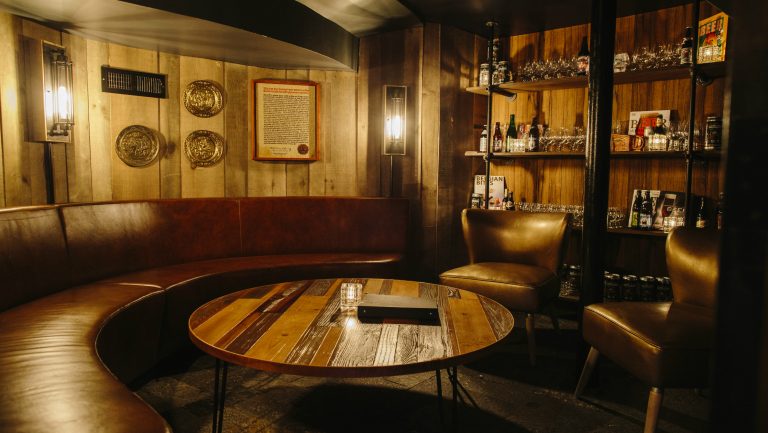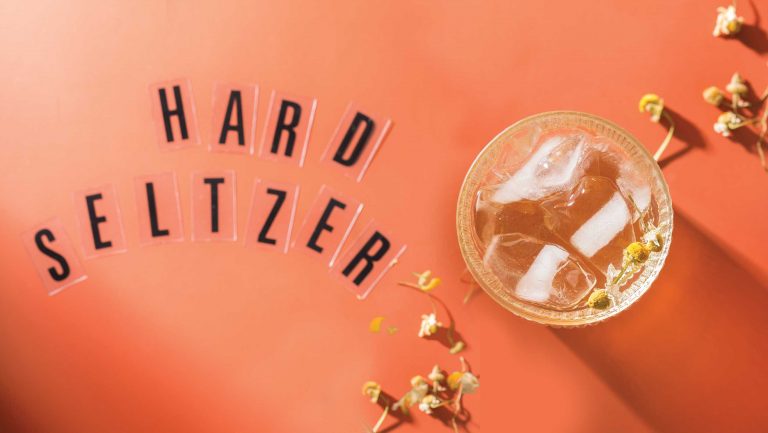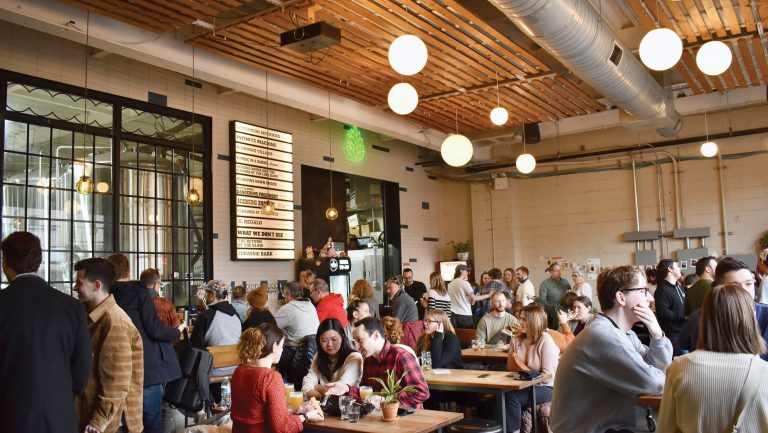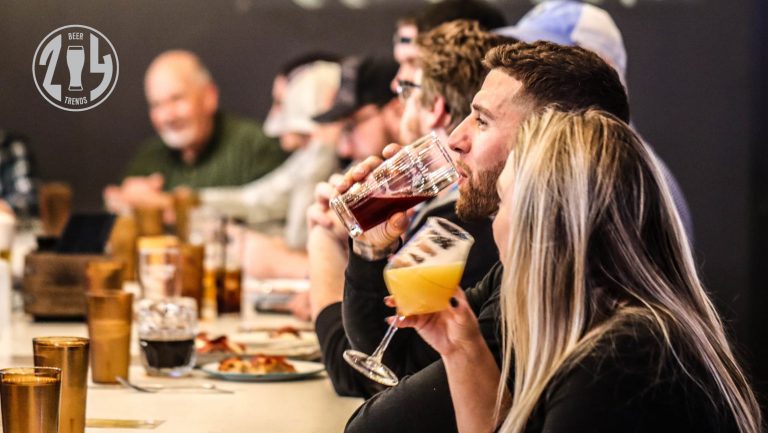There are two directions patrons can take when they walk into Treadwell Park on the tony Upper East Side of Manhattan. One stairway leads up to a bar and dining room, a noisy wood-planked restaurant where flat screens broadcast sports and a mostly millennial crowd plays Ping-Pong™ and pinball. The other stairway leads down to a practically hidden basement-level space calling itself the world’s first “beer reserve room.”
The project emerged from the mind imagination of Treadwell Park’s beer director, Anne Becerra, who became New York City’s first female Certified Cicerone in 2010. Brainstorming ways to best use the tucked-away room, Becerra advocated for a private place where dedicated craft beer aficionados could participate in educational events like samplings, classes, meet-the-brewer nights, and bottle shares. “If you want to have more of an intimate tasting experience,” she says, “that’s the place where people can escape the crowds.”
Becerra also wanted to offer her top customers something more: a reserve beer list of several dozen selections, among them the oldest, rarest, most prized bottles in the world. “Each beer on that list is unique, with its own history,” says Becerra. “I give the customers information about the brewery, the town, the style. Even if you’re not a super-hard-core beer geek, you can probably find something that looks interesting.”

Don’t miss the latest drinks industry news and insights. Sign up for our award-winning newsletters and get insider intel, resources, and trends delivered to your inbox every week.
Decor evocative of beer culture surround those who sip their selections in the reserve room. Abraham Merchant, whose Merchants Hospitality owns Treadwell Park and several other eating and drinking establishments in New York City, outfitted the 10-person lounge with plush benches and handcrafted wood tables, with a bar cart, soundproofing, classic beer books, and a vintage Orval clock, to give the room a classic, wine cellar–like vibe. Merchant says he spent more than $100,000 on renovations and decor.
Not included in the expense column is the beer itself. Because of its relatively high price points ($68, for example, for a Mélange #14—vintage, barrel-aged strong ale from California’s The Bruery), and the room’s small size, Merchant doesn’t expect bottle sales to drive substantial revenue. “We consider this inventory as an investment,” he says. “People are going to love coming here … It’s our calling card.” However, the room will also be available for private events, which could prove to be a promising profit center.
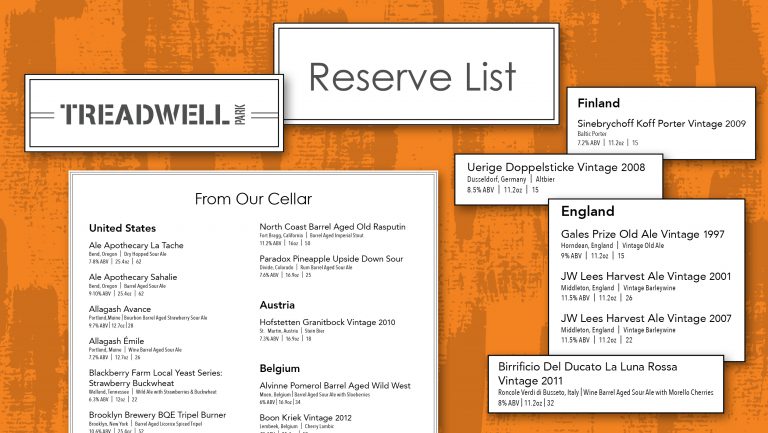
While Merchant views the investment through the lens of marketing and promotions, Kurt Moody, a Houston-based bar-and-restaurant consultant, cautions operators looking to follow suit with beer reserve rooms of their own. The financial reality of limited depletions, for one, may be a barrier to profitability. “Even though some of [the beer] can be aged, it’s a risk to take on a full case of product where you might sell one [bottle] per week. If I have six bottles of a beer that’s going to go bad soon, I might have to offer it at a discount,” says Moody, who, through Patrick Henry Creative Promotions, consults for brands like The Cheesecake Factory, Ruth’s Chris Steak House, and the Hard Rock Cafe.
Proper storage is also key, he says. Given the long shelf life of wild, bottle-conditioned, and high-alcohol specialties, Becerra, who learned her trade at some of the first Manhattan beer bars, like Blind Tiger and The Ginger Man, keeps hers upright in dark, temperature-controlled coolers.
Becerra also rigorously trains her staff, running daily pre-shifts to teach the nitty-gritty on each new beer, including the appropriate glassware. She also requires that servers pass the Level 1 Cicerone beer server test. But conveying deep expertise—the level required to sell a $65 bottle of spontaneously fermented plum lambic—may present operational challenges. “[Becerra] herself is an expert, but are the bartenders and servers going to be able to answer patrons’ questions or are they going to default to people reading the beer menu?” Moody asks. “It’s very difficult for others to show the passion that she shows.”
While the financial model of a beer reserve room may present challenges, the “calling card” promotional appeal Merchant notes may prove the concept’s biggest benefit—it certainly differentiates Treadwell Park in the crowded Manhattan bar landscape. In a city that sees tens of millions of beer-savvy locals and curious tourists coming through each year, the beer reserve room is something new. “It’s like a little adventure,” Becerra says. “A way to allow people to peek into a place they may not always be able to visit. Like a wine cellar, but for beer.”

Dispatch
Sign up for our award-winning newsletter
Don’t miss the latest drinks industry news and insights—delivered to your inbox every week.
Tara Nurin is the beer and spirits contributor to Forbes, the drinks columnist for New Jersey Monthly, a cohost of the What’s on Tap TV show, and a writer for publications like Food & Wine, Wine Enthusiast, Vice Munchies, and VinePair. She is a BJCP-certified judge, teaches a for-credit university beer class, and leads beer seminars for institutions like the Smithsonian. The Camden, New Jersey, homeowner has won two first-place awards from the North American Guild of Beer Writers, founded the state’s first beer education group for women, and volunteers as the archivist for the Pink Boots Society.

